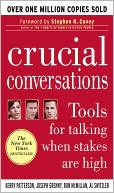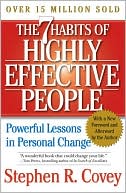The Audience, the Message, the Speaker
This brief, core introduction to public speaking combines a concern with classic rhetoric with a strong focus on ethics, diversity, and the latest technology. The Audience, The Message, The Speaker emphasizes the speaker's responsibility to convey succinct, meaningful information that is well organized, reliable, and clearly expressed for the relevant audience.
Search in google:
This brief, core introduction to public speaking combines a concern with classic rhetoric with a strong focus on ethics, diversity, and the latest technology. The Audience, The Message, The Speaker emphasizes the speaker's responsibility to convey succinct, meaningful information that is well organized, reliable, and clearly expressed for the relevant audience.
Prologue: Theory of Oral Communication The Fundamentals of Communication Making Ourselves Understood Communication ModelsPart One: The AudienceChapter 1 - Preparing to Meet the Audience The Communication Process The Audience The Message The Speaker Value to the Speaker Speaker-Audience Relationship Getting StartedChapter 2 - Preparing to Meet the Audience Receiving an Invitation to Speak Logistics Demographics Adapting Your Speech to the Audience Particular Interests Possible opposition Political Perspective Religious Influences Cultural Differences The Relevance Factor Stepping into the Listeners’ Shoes Speaking So That People Will Listen Gain the Attention Have a Clear Purpose Emphasize key Words and Points Provide Connecting Phrases Build Attention Features Ease the Strain of Listening Penetrate Stereotyped Notions Observe the Time Limit Respect for the Audience / The Audience’s Bill of RightsChapter 3 - Finding Common Ground Connecting with the Audience Framing the Issue Avoiding Divisiveness Basic Agreement Qualified Meaning of Common Ground Positive Results The Audience in a Pluralistic Society Diverse Perceptions of Communication Skills Learning About Yourself and Others Common Characteristics The Cultural Effects of Diversity Diversity in the Workplace Social Implication of Diversity The Speaker’s Dilemma Overcoming Cultural Barriers The Challenge of PluralismChapter 4 - Listening and Reacting Choosing to Listen Listening Models Learning to Listen Forming Good Listening Habits Feedback to the Speaker Listening Passively Listening Actively Comprehensive Listening Obstacles to Listening Critical Listening Listening for Faulty Reasoning Retention and Access Semantics of Listening and Reacting Levels of Abstraction Semantic Reactions Shaping Perception Intentional Choice of WordsPart Two: The MessageChapter 5 - The Topic, Purpose, and Content of the Speech The Topic Appropriateness Complexity Significance Scope The General Purpose The Speech to Inform The Speech to Persuade The Speech to Motivate The Speech to Entertain Combinations The Content Using the Internet Taking Notes Forms of Support Definition of Terms Specific Instances Controlled Studies Statistical Data Testimonial Evidence Interest Grabbers Selecting Your MaterialChapter 6 - Organizing and Outlining The Need to be Organized The Value of an Outline The Basic Structure The Introduction Attention Statement Purpose Statement Giving Focus to the Subject Phrasing the Purpose Statement The Presummary The Body of the Speech Main Headings Supporting Information Transitions The Conclusion Summary Reinforcing the Thesis Quotation Finished OutlineChapter 7 - The Speech to Inform The Qualities of Exposition The Focus Makes It Your Own Being Familiar with your Subject Speaking Opportunities Topics for the Speech to Inform Taking a Neutral Position Priming the Audience’s Interest Helping to Inform the Voter Instant Speech Speaking in the Business World Training Specialist Speaking to a Committee The Informative PresentationChapter 8 - Thinking and Reasoning Critical Thinking Selective Learning Examining Beliefs Testing What You Read and Hear Learning What You Need to Know Interpreting Information and Drawing Conclusions The Inductive Process Signs and Causes The Deductive Process Discovering What You BelieveChapter 9 - the Speech to Persuade The Persuasive Message The Inherent Qualities of Persuasion Modes of Proof Taking a Position Status Quo Conflicting Beliefs Persuasive Information Constructing and Argumentative Case Advancing a Claim Using Evidence to Support a Claim Providing a Warrant to Reinforce Evidence Forming a Thesis Facing Opposition Emotional Appeals Shared Values Personal Integrity / Credibility of the SpeakerPart Three: The SpeakerChapter 10 - The Speaker's Frame of Mind Desire to be Heard Thorough Preparation Techniques to Relieve Anxiety Creating a New Self-Image Self-esteem Message to Ourselves Changing our Self-perception Self-regulating Mechanism Comfort zones Making Adjustments Imprinting the New Image Convincing Yourself Rewards of SpeakingChapter 11 - Delivering the Message The Use of Language Words and their Meaning Offensive Language Modes of Delivery Impromptu Speaking The Fully Scripted Speech Speaking Extemporaneously The Dimensions of the Message Primary Message Auxiliary Messages Secondary Messages Nonverbal Communication Vocal Communication Emphasizing Key Points Repetition Pointer Phrase Oratorical Emphasis Visual Reinforcement Responding to Questions Know Your Subject Anticipate Questions Direct Answers to the Whole Audience Be Succinct Encourage Involvement Maintain Control Know When to StopChapter 12 - The Power of Visuals PowerPoint Do it Right Practice, Practice, Practice High Stakes Presentation Speaking to a Specific Audience The Tools of the Trade What Visuals Can Accomplish Making It Happen with Visual Aids Projecting Images Plain and Simple Visuals Desktop Visuals Microphones and Cameras Public Address Systems Radio Microphones Television Cameras Putting it All TogetherChapter 13 - Meeting Ethical Standards Telling It Like It Is Values Clarification Applying Your Own Ethics Ethical Standards at Risk Political Ethics Avoiding Plagiarism Sophistry Civil Disobedience Social Contracts The Value of Ethical Conduct The Speaker's Code of Ethics Moral Questions Reason is the Ultimate EthicAppendix: Speaking Opportunities








